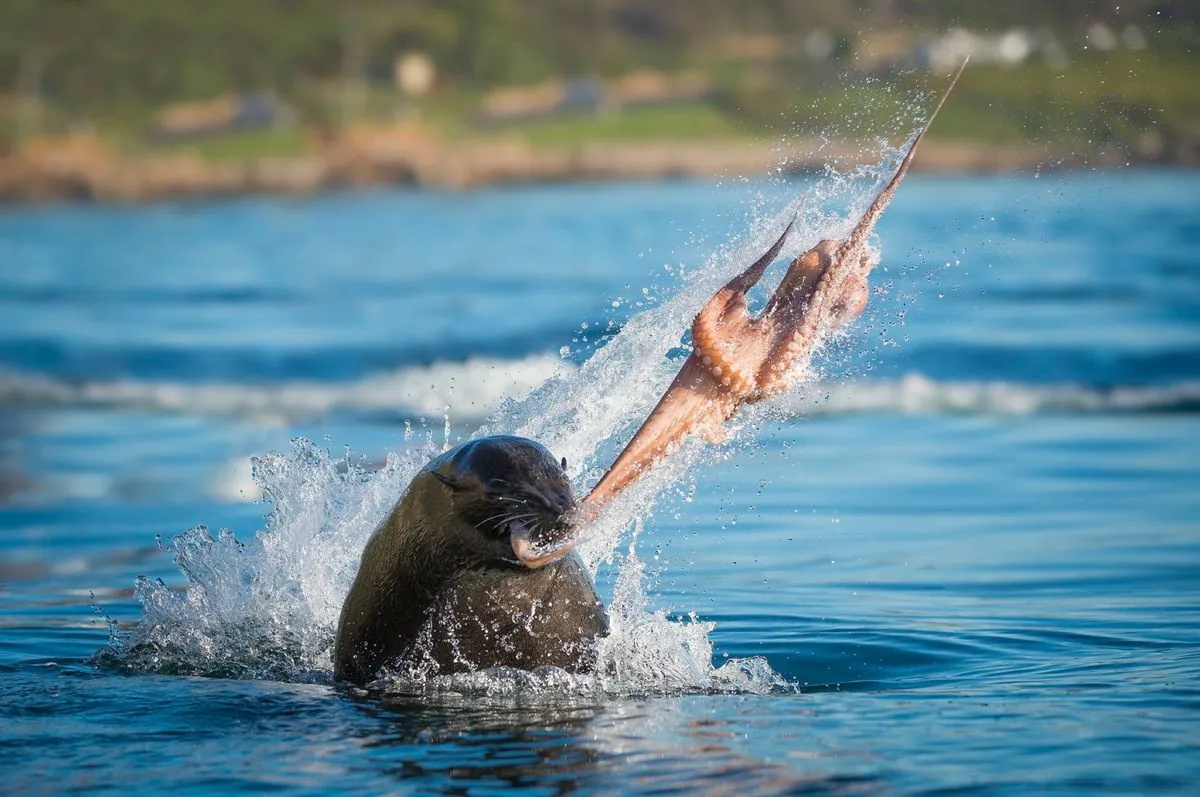Unprecedented Rabies Outbreak Among Seals Discovered in South Africa
Scientists identify first known rabies outbreak in sea mammals off South African coast. At least 24 Cape fur seals affected, raising concerns about transmission and control measures in marine environments.

In a groundbreaking discovery, scientists in South Africa have identified the first known outbreak of rabies among sea mammals. This unprecedented event has raised concerns about the virus's ability to spread in marine environments and its potential impact on both animal and human populations.
Dr. Lesley van Helden, a state veterinarian, reported that at least 24 Cape fur seals were found dead or required euthanasia due to rabies infection. These cases were discovered along South Africa's west and south coast, indicating a widespread issue.
Rabies, a viral disease affecting mammals, is almost always fatal once symptoms appear. It typically spreads through saliva, usually via bites or when infected animals groom each other. While the virus has long been observed in terrestrial animals such as raccoons, coyotes, and domestic dogs, its presence in marine mammals was previously unrecorded, except for a single case in Norway's Svalbard islands during the early 1980s.

The outbreak was first detected in June 2024 when a dog in Cape Town became infected after being bitten by a seal on a beach. This incident prompted researchers to test brain samples from 135 seal carcasses collected since 2021, revealing that the virus had been present in the seal population for at least two years.
Greg Hofmeyr, a marine biologist studying seals in South Africa, emphasized the novelty of the situation, stating, "It's all very, very new. A lot of research is required ... there are a lot of unknowns here."
Genetic analysis of the rabies virus found in the seals matched that of black-backed jackals in Namibia, suggesting a possible transmission route. Dr. van Helden theorized that jackals might have initially infected seal pups along the Namibian coastline.
The outbreak poses significant challenges for public health officials and wildlife managers. Cape fur seals, which number approximately 2 million and migrate along the coasts of South Africa, Namibia, and Angola, often come into close contact with humans, especially on beaches around Cape Town.
Gregg Oelofse, Cape Town's head of coastal and environmental management, reported that authorities had begun vaccinating small numbers of seals at two popular harbors in the city. However, the effectiveness of these vaccines in seals remains untested.
"It's hard to predict long-term transmission dynamics. We've seen previous instances of rabies viruses winding up in new hosts and then dying out."
The situation presents unique logistical challenges. Vaccinating a significant number of seals that live primarily in the ocean and migrate along a coastline exceeding 3,500 kilometers poses considerable difficulties. Unlike land animals, which can be vaccinated through bait containing oral vaccines, seals generally only consume live fish.
As South African officials collaborate with international experts to address this unprecedented outbreak, concerns remain about the potential for further spread. The possibility of other seal species coming into contact with infected Cape fur seals and then traveling to different parts of the world presents a low but significant risk.
This outbreak serves as a reminder of the complex interactions between wildlife, domestic animals, and human populations in disease transmission. It underscores the importance of continued vigilance and research in understanding and managing zoonotic diseases in an ever-changing global environment.


































